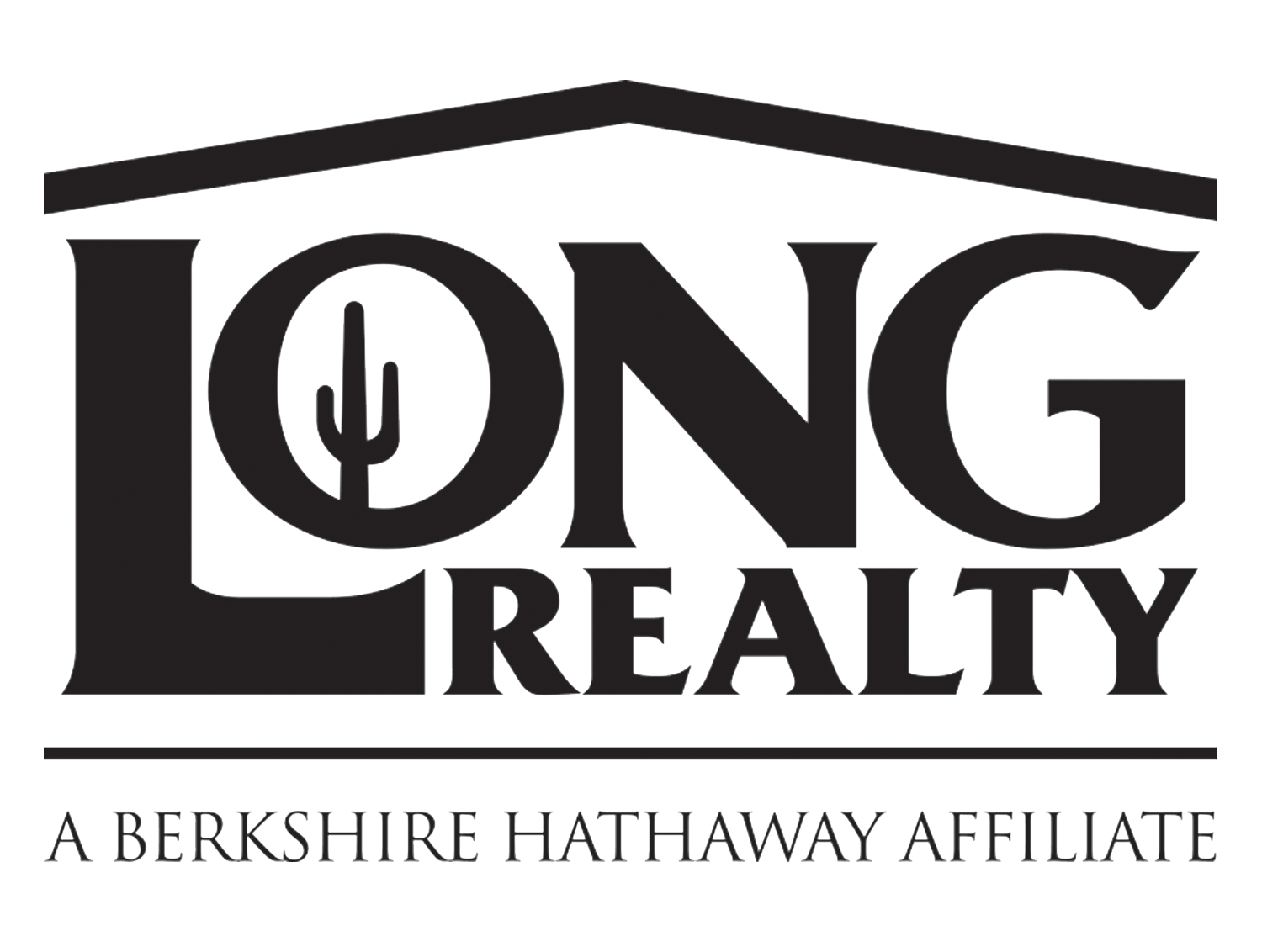February 2nd, 2011 Some home shoppers know right away if they want to purchase a new construction home or a resale home. Others however are open to both possibilities and may often find themselves in a situation of deciding between these two options as their final choice. There are a multitude of benefits and detriments to both scenarios. However, in focusing on the decision process between the two there are a few key items to keep in mind when it comes to upgrades, features, and finishes.
First, try to compare each home with similar features and finishes as much as possible to arrive at a truly comparative price picture. Many of the newest homes can feature upgraded energy efficiency or luxurious products and materials that carry more value than some older homes possibly under consideration. A number of product material differences throughout the house can add up to a rather large value difference. This may make a more expensive new home actually more worthwhile than a lower priced existing home, or even vice-versa if the resale home is a step above.
However, whether it’s the new construction home or the existing home that has the nicer features, don’t let features unimportant to your specific needs carry too much weight, especially in the cost comparison. For example, if a resale home has a finished pool in the backyard and the new construction does not, this could look like a justification for paying more for the existing home. However, if you don’t want or care for a swimming pool this feature might effectively add no value to you (or even detract in some cases) and make the premium paid for that feature worthless except maybe in the event of a tiebreaker between the two. The bottom line is to add appropriate weighting to all the features present based upon your desires and you’ll arrive at a more clear picture of the comparison.
Purchasing a new construction home can be a very rewarding experience as you’ll have considerable flexibility to mold the style, colors, and options that are important to your lifestyle into the new home. However, sometimes it’s this ability to customize the home that can inadvertently sway your choice when it’s not really justified. What effectively happens in many cases is buyers will add an excessive amount of options to the new construction home because they can easily make those changes, but when comparing the costs between new and resale homes this can dramatically skew the comparison. Building a dream home by adding every option doesn’t help in making the home choice between new and existing. Try instead to add options and features that more closely mimics the resale home to create a good price comparison. If after then you decide on the new home you can still add what you want to the home, but at least by not prematurely making those selections you don’t lose site of the accurate cost analysis.
A helpful hint in picking new construction upgrades or options is to create multiple scenarios, preferably at least three. Make the first upgrade package a bare bones selection. This could be with no upgrades or often using the upgrades that were used in your comparative analysis with the existing home is a good starting point. Second, create a package of upgrades that meets your every demand, wish and desire….effectively build your dream home in terms of features. For some people, especially those with more disposable income or possibly retired and less concerned with resale value of all the options, this could be the final product chosen. However, the third scenario created is often much closer to a practical solution. This package should meet your basic lifestyle demands in terms of features and finishes, but with an eye on practicality and even future resale value.
Another point when comparing resale and new construction features is the likelihood of making future changes. It’s all too often when looking at a resale home (or even new construction) that you’ll here a buyer make the comment about being able to change/remodel something they don’t care for down the road. In most cases those changes don’t even come to fruition. Unless you are committed to making changes immediately and have the cash on hand to pay for it, don’t rely on those “future modifications”.
Deciding between new construction homes and resale homes isn’t always an easy decision, but at least by keeping some of these points in mind you’ll have more information to consider when analyzing features and the relative costs of both.
January 30th, 2011 In the first part of our two-part article on residential interior doors we explained the most frequently used construction types. Now we’ll take a look at some of the styles and other characteristics of doors to get a more complete sense of what you’ll encounter in many homes on the market.
Flush vs. Panel – A readily seen distinction in door styles is the difference between a flush door and panel doors (also called stile & rail doors). Flush doors are essentially flat doors with very little decorative character to their make-up. A variety of construction techniques can be used with this style of door but this is the style used frequently for hollow core doors. Panel doors are made up of several pieces joined together that creates a more decorative, raised panel look. The essential components of panel doors are the two stiles that are the vertical pieces along both edges of the door and the horitzontal rail sections which join them together at the top, bottom, and frequently in the center. Again a variety of construction methods can be used for a panel door, but a common application is with solid core doors.
Within the panel door style there are countless options for decorative appearances but a few of the commonly found varieties are two-panel, four-panel and six-panel. The two-panel appearance is created by having a middle rail separating the top and bottom sections of the door. These panels will frequently give a “raised” look by incorporating recessed/routered designs giving the door more intrigue. A four-panel door adds a mullion, which is vertical piece added to the middle of the door separating the door into multiple columns, to a two-panel layout thereby creating four panels. A six-panel door simply adds another rail on top of the four-panel, further dividing the door into sections.
Style is certainly subjective but panel doors are a typically more sought after style. When buying a new construction home these may be an additional charge or built into the price of a more upscale community. Certainly the price of a panel door in similar materials/costruction methods will nearly always be more expensive. Door types will also vary in price sometimes by the type of wood that may be used in its construction. Keep all of these factors in mind when comparing different door products.
Most interior doors are built at a height of 6′ 8″, although some builders or homes may offer taller doors such as 8′. It’s also worth noting that the doors leading to the exterior of the home like a front door or garage entry door are required by code to be fire-rated and are therefore much sturdier. This increased sturdiness of course also has the additional benefit of being more resistant to break-ins and most likely be better insulated as well.
The above door characteristics are just some of the many options and features that are available in doors, but include the most commonly seen applications in today’s market. For further questions or information about doors that are part of a home you’re looking at please contact a REALTOR© or contractor.
January 26th, 2011 Buyers looking at multiple homes in an area will likely come across several different types and styles of interior doors. In this two-part article we will try to provide a general overview into the commonly used door types and styles on the market and the pros and cons to each. Always check with your REALTOR© or a contractor for more specific information about the doors in a home you might be interested in.
In part one we’ll focus on the biggest functional difference between doors which originates from the construction method used to create them. While many different door types exist we’ll focus on the three most widely used categories: solid wood doors, solid core doors, and hollow core doors.
Types of Doors
Solid Wood Doors – Because of the expense of solid wood doors these are often the least widely used type of door, especially in today’s market in the greater Tucson area. These doors have some positive benefits of being a true natural material, providing excellent sound dampening, and superior insulating qualities. They are also indicative of attention to detail and have a great look that also holds up well to potential damage.
There are several downsides to solid wood doors though. Foremost is their substantial cost premium over other types of doors available on the market. This precludes their use in most of today’s production homes and therefore you’ll see very few true wood doors on the market. The other major downside to solid wood doors is their weight. A full wood door has a substantial weight surplus when compared with other commonly used door materials and also is more prone to expansion and shrinkage factors with temperature changes.
Solid Core Doors – This type of door is mostly composed of MDF (or similar material) on the interior with a thin layer of veneer wood laminated on the exterior. This gives the appearance of a wood door and much of the structural rigidity as well, without the substantial cost. The primary benefits of this door mirror that of the full wood doors in that it provides effective sound dampening and moderate insulation too.
The negatives of this type of door is its weight and cost when compared with hollow core doors. Many of the mid-level production communities will utilize this type of door, particularly in the last decade or so because it is a nice balance between cost and function. These doors are subject to expansion and contraction as well during temperature and atmospheric changes, so some adjustment may be necessary after insulation.
Hollow Core Doors – The last type of door commonly used is the least expensive and therefore attractive to many home builders and buyers alike as a cost saving measure. Often constructed with a wood frame that is an inch or two wide, they are typically wrapped with hardboard or plywood for the exterior. The even greater difference though is that typically they’re reinforced with corrugated cardboard to add stiffness to the middle section. Due to this construction technique the doors are lighter weight which can be beneficial. They also take stain or paint very well and are much less likely to warp, shrink, or swell than solid doors. Modern hollow core doors are much improved over older generations that were very flimsy and weak.
A few negative characteristics about these doors is they are more prone to damage from improper use, children, or excessive loads. They’re also relatively inefficient in most cases with their sound dampening abilities when compared with solid doors, which can be a major detractor. Repair is often very difficult with this type of door as well. The impression that most people have of this type of door can also be a downside as it’s seen as less desirable in many markets.
In part two of this article series on doors we’ll examine the styles and dimensions commonly found throughout many homes.
January 24th, 2011 Statistics released by the Tucson Association of REALTORS© demonstrate some slight improvements throughout the Tucson area marketplace. Total unit sales were up 13.38% over November and 2.37% over December of 2009. Not only were the number of closed sales higher but the average sales price edged up 3.13% over November, but still remains a bit lower than a year ago. New listings were also down and the median sales price remained essentially unchanged. All of these signs line up well with the slow economic recovery we’re beginning to see signs of nationally as well. While it’s not a time to proclaim that all is well again in the real estate market locally, a few more consistent months similar to this would be a positive sign of continued market stabilzation. Stable conditions are probably the best case scenario for the Tucson real estate market in the short term, although this area’s continued growth and attractiveness to winter visitors should provide demand well into the future and eventual housing recovery.
January 22nd, 2011 The Town of Oro Valley remains one of the more active areas for real estate in the Tucson vicinity and future business expansion looks to help continue this trend. Rancho Vistoso is the home of Stone Canyon and many other up and coming businesses. Continued demand for housing appears assured with the expansion of several area companies including Ventana Medical Systems, Sanofi-aventis, Oro Valley Hospital and the newly arrived University of Arizona BIO5 Oro Valley facility which occupies the former Sanofi-aventis laboratory. The most significant contributor to the influx of new residents will likely be Ventana Medical Systems, which announced this past October that it plans to add up to 500 employees to its current base of nearly 1,000 existing staff over the next five years. This also includes new buildings and capital investments which may total nearly $180 million. Clearly this will be an enormous benefit in the short-term and long-term for the entire Oro Valley community.
An additional factor that encourages purchasing a home in Oro Valley is the amazing scenery available at seemingly every turn. The majestic Catalina Mountains dominate the skyline to the east, but not to be overlooked are the rugged Tortolita Mountains to the northwest. It’s not only the natural beauty but Oro Valley’s investment in its roadways, public art, and town services that attract residents. While unfortunately the cost to build homes in Oro Valley is amongst the highest in the state in regards to permitting and impact fees, there is most definitely a noticeable payback with these funds.
Statistics from the Tucson Association of REALTORS© show that there is both supply and demand for the homes in this locale. The number of Oro Valley homes for sale was approximately 538 during the month of December and 57 homes closed escrow. Homes sold in the Rancho Vistoso master-planned community accounted for over half of those closed in Oro Valley. Considering that Oro Valley homes are typically priced higher than many areas of town and that the greatest market activity is still being seen much below Oro Valley’s average price, those are somewhat encouraging sales figures.
January 21st, 2011 The mortgage interest deduction (MID) has come under attack recently by some experts who have advocated its elimination as a deficit reduction method of saving costs to the government. Some of the speculation centers on the MID being foremost a benefit to the wealthy. However, the MID primarily benefits middle-income households, with 65% of families taking the MID earning less than $100,000 a year. Those making under $200,000 total nearly 91% of all MIDs taken.
The mortgage interest deduction is a vastly important policy to many, many families across the country. If it were to be repealed the impact on family budgets would be substantial. The National Association of REALTORS© continues to lead the charge along with many other groups in an effort to have this important policy remain unchanged. The MID has long been one factor allowing younger families to realize the dream of home ownership any enabling of this incentive would be hugely unfortunate.
January 19th, 2011 Last year Congress enacted the Small Business Jobs Act of 2010 that has expanded the number of people who may be required to file a Form 1099-MISC. This specifically will target many property owners who receive rental income. Beginning in 2011, recipients of rental income from real estate will be subject to the same information reporting requirements as taxpayers engaged in a trade or business. This means that any payments made to a service provider (plumber, carpenter, exterminator, accountant, landscaper, etc.) that total more than $600 during the year will require the landlord to file a Form 1099-MISC to the service provider and the IRS. Failure to file a required Form 1099 can lead to penalties and fees being assessed to the landlord.
While this change won’t actually require any filing until 2012 it is important that rental property owners begin keeping adequate records to ensure their compliance next tax season. It is advisable to check with your tax professional for specifics but rental property owners should have each service provider fill out a Form W-9 (Request for Taxpayer Identification Number and Certification) prior to making any payments to providers. Should the service provider not return the W-9 properly filled out the landlord may be subject to withhold 28% of the payment balance and submit that directly to the IRS. There are some provisions to provide relief for individuals that can demonstrate undue hardship under this law or with minimal rental income, but those guidelines have not yet been published by the IRS as of the time of this writing.
Reports of a repeal of this provision have surfaced and U.S. Senate Finance Committee Chairman Max Baucus (D-Mont.) advised that he would introduce legislation to this effect, but the timeline for such an introduction and its chance of success is unknown. We’d urge all rental property owners to contact their congressional representatives to vocally oppose this new requirement. Without any modification there are additional provisions (from the Health Care Reform Bill) that will expand this requirement beyond just service providers to include payments to corporations as well beginning in 2012. That would mean even purchases made at Home Depot over $600 relating to the rental property would require that landlords obtain tax ID information from them and file a 1099. Contact your representative today to hopefully build some momentum to repeal this burdensome new law.
January 17th, 2011 A ground fault circuit interrupter (GFCI) or ground fault interrupter (GFI) receptacle is a type of receptacle that disconnects the electrical circuit upon detecting current leakage. Typically these devices will be found in wet locations throughout kitchens and bathrooms and are mandated by building codes. At least one receptacle in the circuit will be a GFCI protected outlet and provide coverage for those downstream outlets in the circuit as well. Notable for their test buttons and reset switches these GFCI outlets are readily visible. These devices are primarily a safety feature in place to reduce the likelihood of deadly electrical shocks (although not all kinds of shocks can be eliminated with these devices) and work complementary with over-current protection. An overloaded circuit may trip this switch thereby cutting off all power to the circuit and necessitating the reset switch to be pressed to regain electrical power.
Most homeowners have probably only noted the existence of these outlets when the GFCI trips the circuit and keeps power from the receptacles on that circuit. Or simply stated they go to operate a hair dryer or coffee maker only to find that the power isn’t working. Most of the time these are tripped by accidentally pressing the test button or some other short-term ground fault. Try pressing the reset button on the GFCI controlling that circuit and see if power returns. Keep in mind that the GFCI controlling a specific receptacle may not be nearby. For instance, typically a GFCI receptacle in the garage may control all those outlets and any exterior outlets too. Or another common occurrence would be to have one GFCI receptacle in a bathroom that controls all the other bathrooms. Knowing just a little about the operation of a GFCI can save you time, frustration, and even money.
January 14th, 2011 A type of reflective insulation, radiant barriers reduce the radiation of heat to or from a surface material. Most of these products are foil based and substantially reduce radiant heat transfer by up to 97%. Many radiant barrier products are formed from two sides of material (at least one of which is commonly an aluminum foil which must be placed facing outwards) with a foam or plastic bubble material in between which provides some reduction in convective heat transfer as well. These products are quite effective in warmer climates and have many other advantageous qualities such as: acting as a vapor barrier, taking up less space than bulk insulation, are non-toxic, will not mold or mildew, and will not change thermal performance over time. However the cost associated can be relatively higher than bulk insulation and because this type of insulation doesn’t adequately address conductive, and to an extent convective, thermal heat transfer it must be used in addition to other insulation.
Because of their costs you won’t find extensive use of these products in existing homes unless the original builder or homeowner was very energy conscious. Retro-fitting spaces is feasible depending upon a home’s structure and desired installation type, but again the issue becomes cost effectiveness. Research done by the Department of Energy in 1991 estimates real world energy cost reduction to be anywhere from 2% – 17% for a home. For a more extensive description of radiant barriers and their effectiveness we refer you to this Department of Energy radiant barrier information.
January 11th, 2011 Modern HVAC (Heating, Ventilating, and Air Conditioning) systems have helped to greatly increase the energy efficiency of homes. One component of these systems that’s typically installed with a central return system are jumper ducts or transfer grilles. Jumper ducts and transfer grilles allow proper air flow from one room to another, particularly when doors are closed. By allowing the passage of air between rooms this helps to balance temperatures and reduces pressures that build up and can cause door slamming.
Jumper ducts are short ducts routed through the ceiling and covered with grilles. The advantage of jumper ducts as opposed to transfer grilles is that by being located in the ceiling they are less likely to pass noise between rooms. Transfer grilles act in the same manner as jumper ducts but are located in the wall space, often in or above the door. While these are only a small component of a well designed HVAC system, they play an integral part in today’s modern home efficiency systems. Take a look around your home or the homes you may be shopping and you’ll likely notice these components installed.
|
Client Testimonials"Thoroughly enjoyed working with Angela! She stuck with me over several years searching and then made the process super easy once I finally found a place!" - Caitlin View More Testimonials |








Connect With Us!